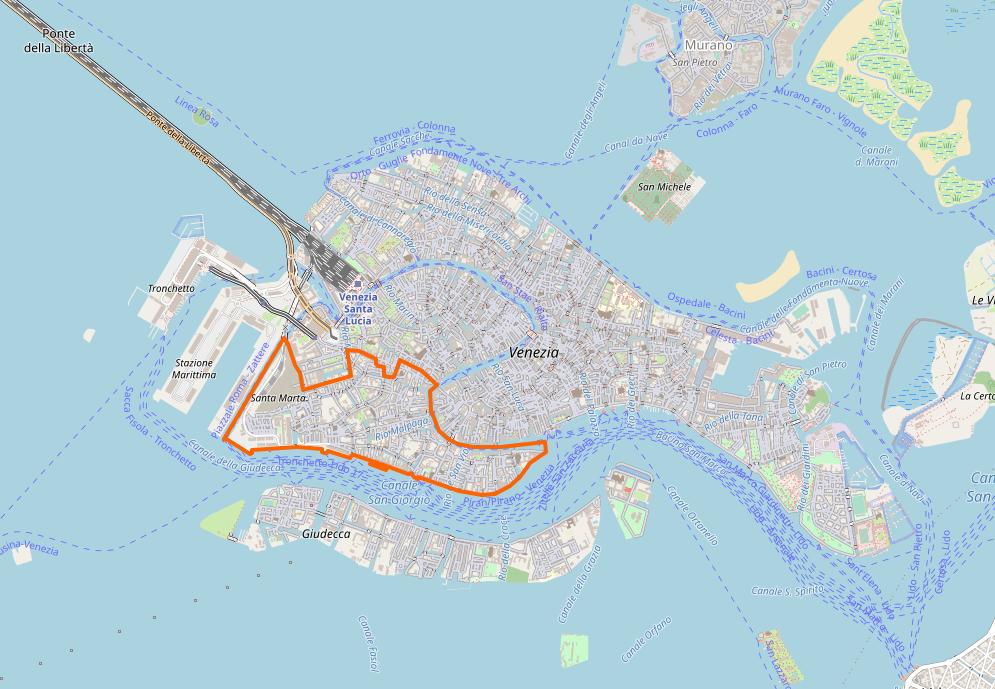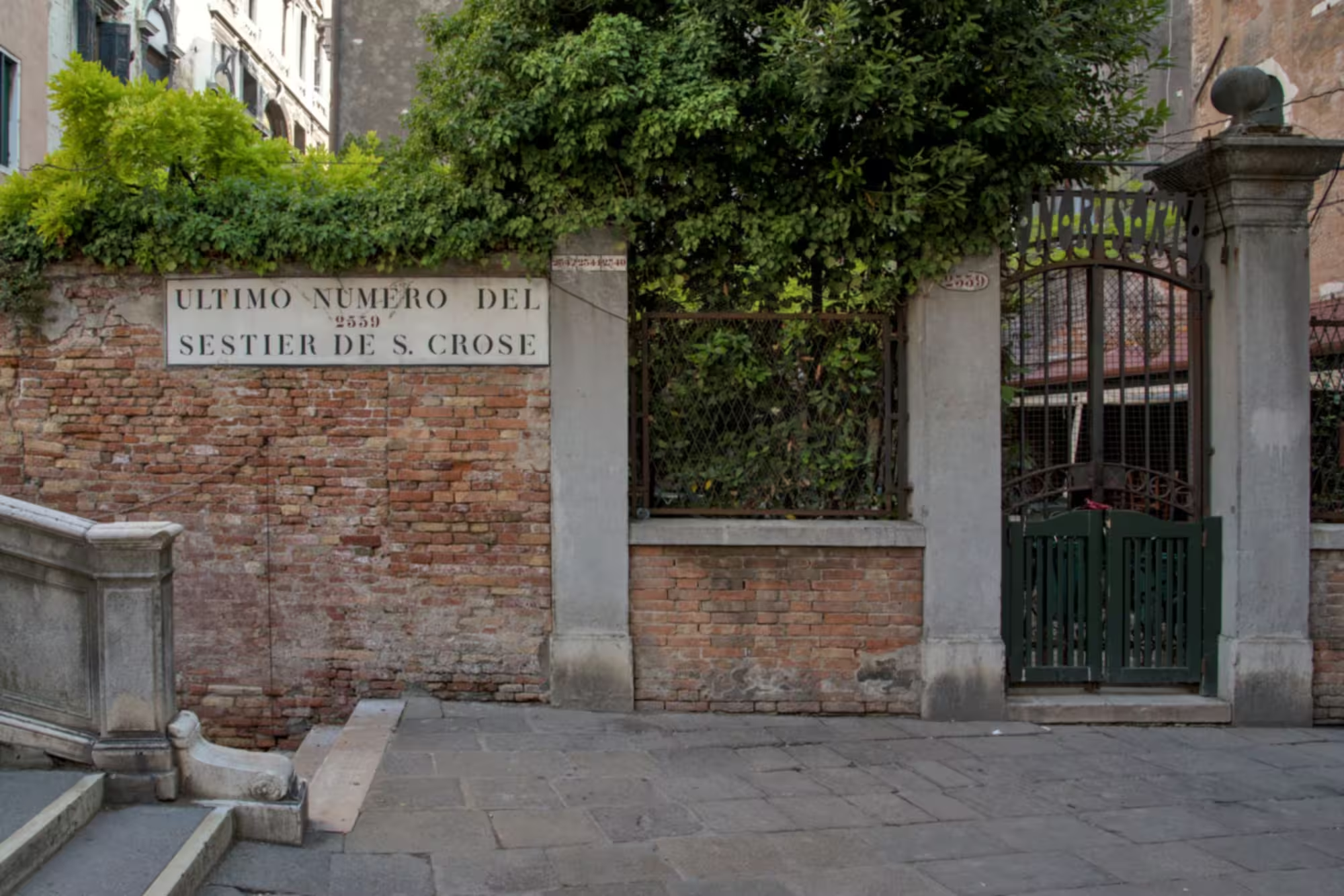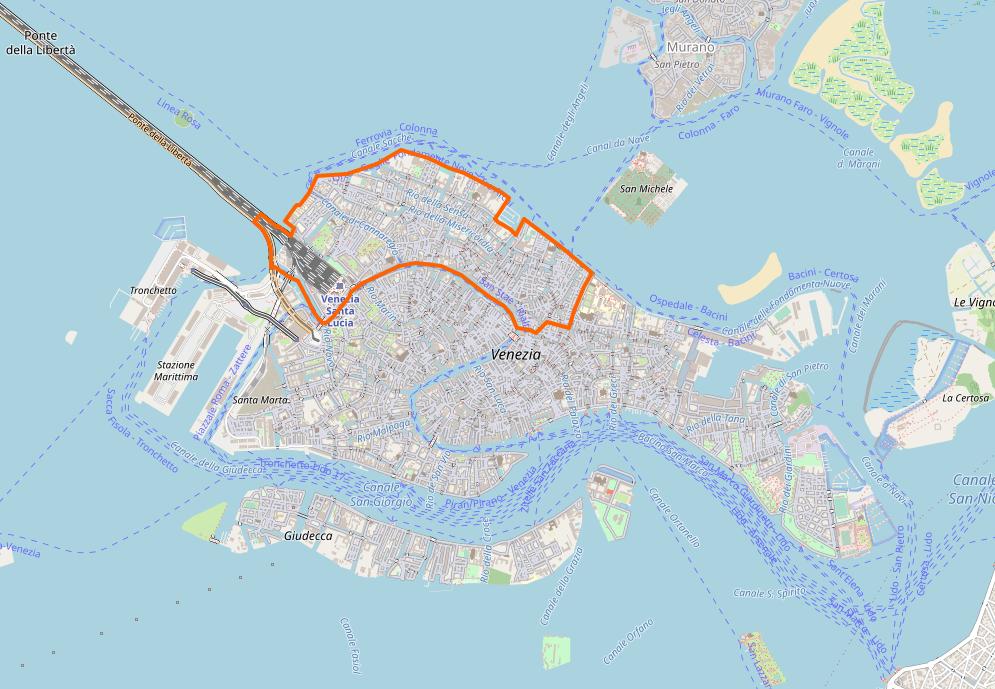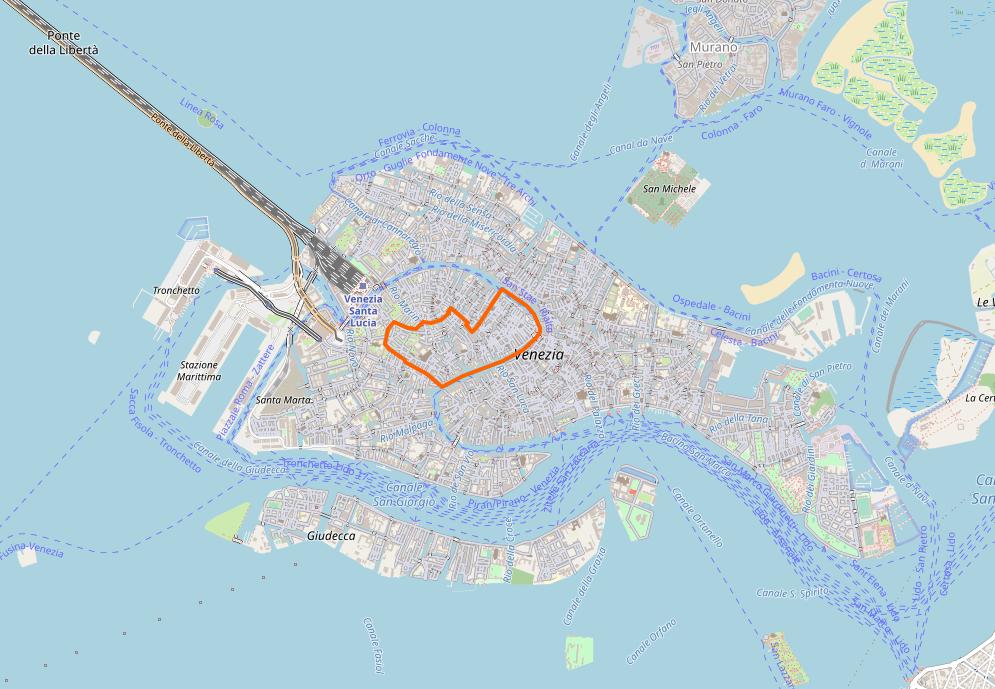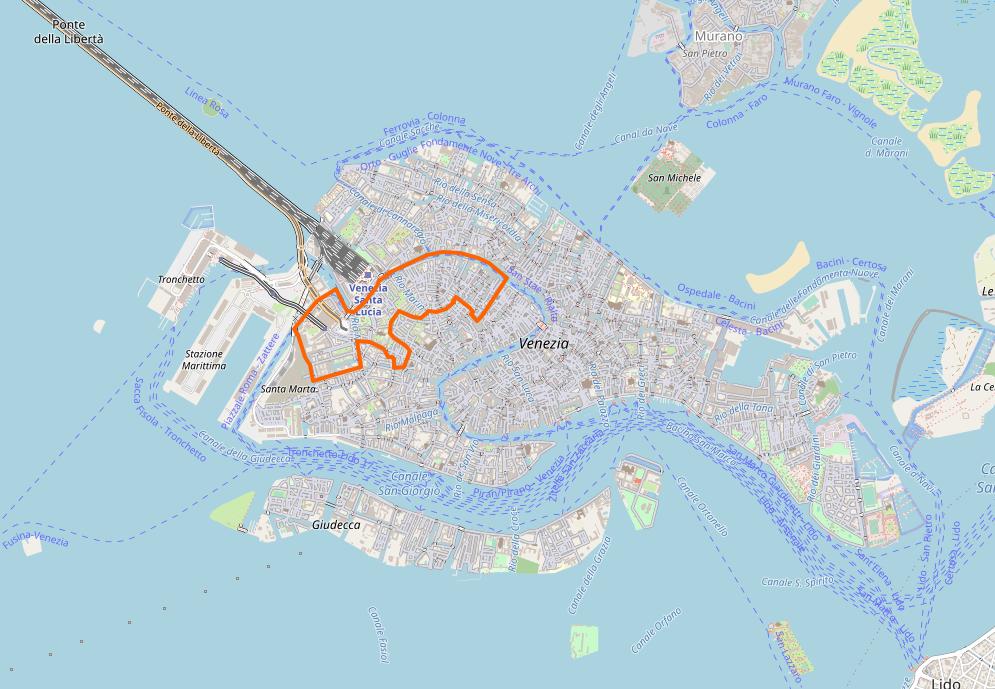The Sestiere Dorsoduro is the southernmost part of Venice proper, on the north side of the Canale Giudecca. It extends from the Punta della Dogana and the Basilica della Madonna della Salute di to San Nicolò dei Mendicoli, and encompasses the ancient contrade of Sant’Agnese, San Trovaso, San Basilio, San Raffaele, and San Nicolò dei Mendicoli.
The current Sestiere Dorsoduro also includes the islands of Giudecca and San Giorgio Maggiore.
The name Dorsoduro
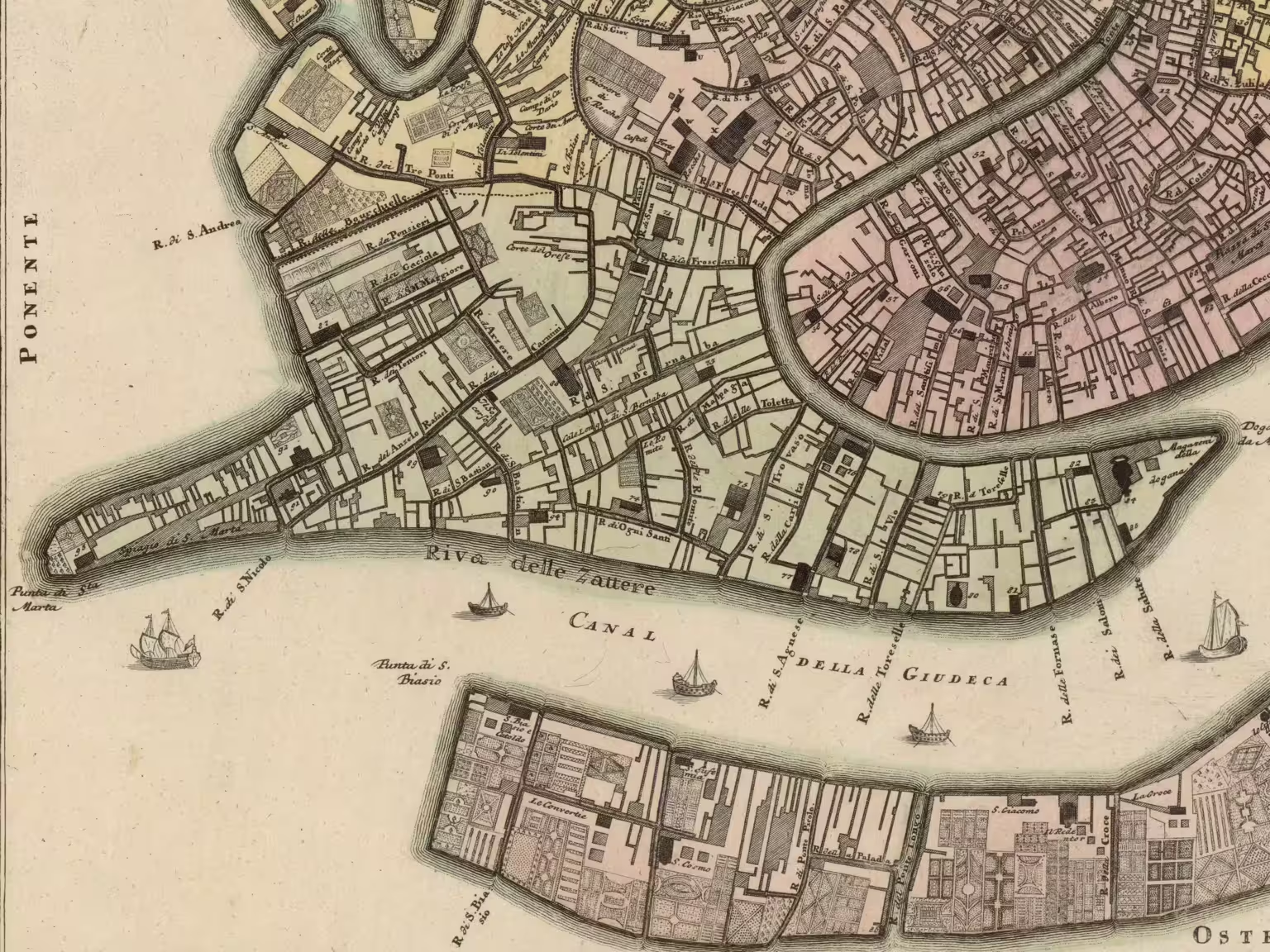
As always, there are several possible explanations of the name.
Dorsoduro (or sometimes also Dossoduro) literally means the ‘hard spine’, and might be a reference to an elevated sandbank running along the Canale Giudecca.
Another possibility is that the name derives from a family name, Dosduri.
The beginning
Few people lived in the area in the earliest times because it was more exposed to raiders and pirates. The wide Canale Giudecca made the islands easily accessible from the sea.
Settlements on the islands on the north side of the Canale Giudecca only started in the time of Doge Orso Partecipazio I in the late 800s.
Trade and timber
Later the Sestiere Dorsoduro played an important role in the trade of Venice, exactly because the wide canal made it easily accessible.
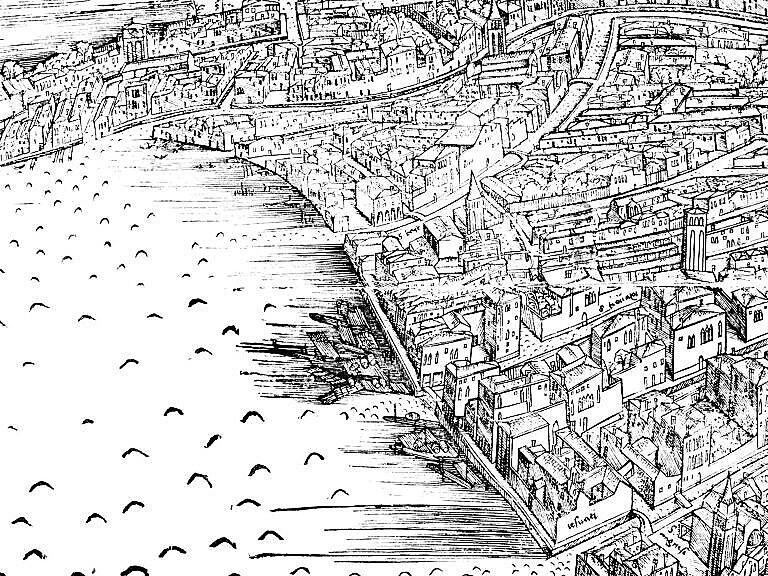
Timber for the shipyards in Venice arrived in the Canale Giudecca, as the placename Zattere indicates. Zattere means rafts because rafts of logs from the foothills and mountains of the Dolomites, transported down the rivers, arrived in the Canale Giudecca, before being distributed to the final destination in the city.
A similar memory is in the name Palanca on the Giudecca island. Palanca means a pulley, hence a hoist or a crane for the timber.
The boat from Fusina
Dorsoduro was also the first point of arrival in Venice for many travellers, before the Austrians built the first bridge to the mainland in the 1840s. Travellers went to Fusina on the mainland, where they took a rowed boat to Lista di Fusina, close to the church San Nicolò dei Mendicoli.
The church, which is now hidden behind modern buildings, once overlooked the lagoon with a view straight towards Fusina.
The other end of the boat trip, Fusina on the mainland, is now a forgotten corner behind the industrial harbour at Marghera.
Churches in Dorsoduro
Consecrated
- Chiesa di Sant’Agnese
- Chiesa dell’Angelo Raffaele
- Chiesa dei Carmini
- Chiesa dei Catecumeni
- Chiesa delle Eremite
- Chiesa dei Gesuati
- Chiesa di Santa Maria della Visitazione
- Chiesa di San Nicolò dei Mendicoli
- Chiesa di Ognissanti
- Chiesa di San Pantalon
- Basilica di Santa Maria della Salute
- Chiesa di San Sebastiano
- Chiesa del Soccorso
- Chiesa dello Spirito Santo
- Chiesa delle Terese
- Chiesa di San Trovaso
- Chiesa dell’Umiltà
Deconsecrated
- Chiesa di San Barnaba
- Chiesa della Carità
- Chiesa di San Gregorio
- Chiesa di Santa Margherita
- Chiesa di Santa Marta
Demolished
- Chiesa di San Basegio
- Chiesa degli Incurabili
- Chiesa di Santa Maria dell’Umiltà
- Chiesa della Trinità
- Chiesa di San Vio

